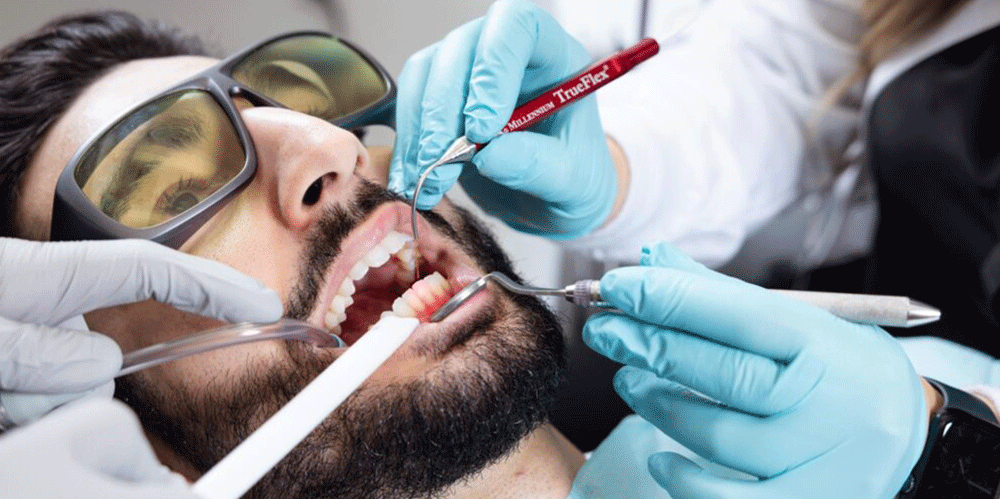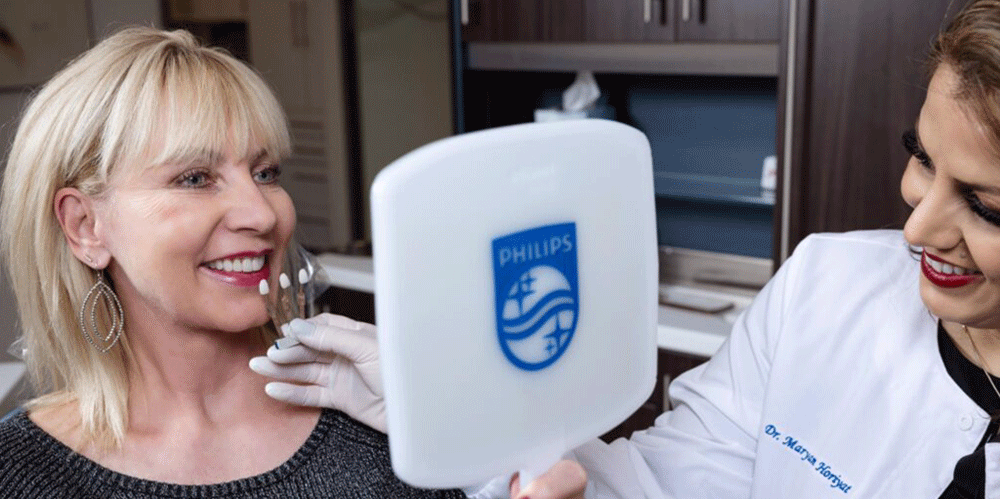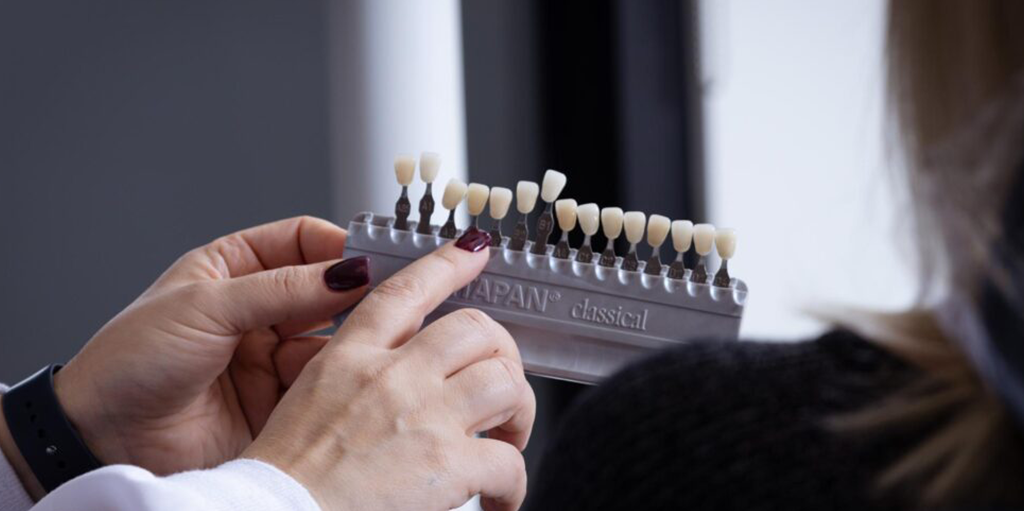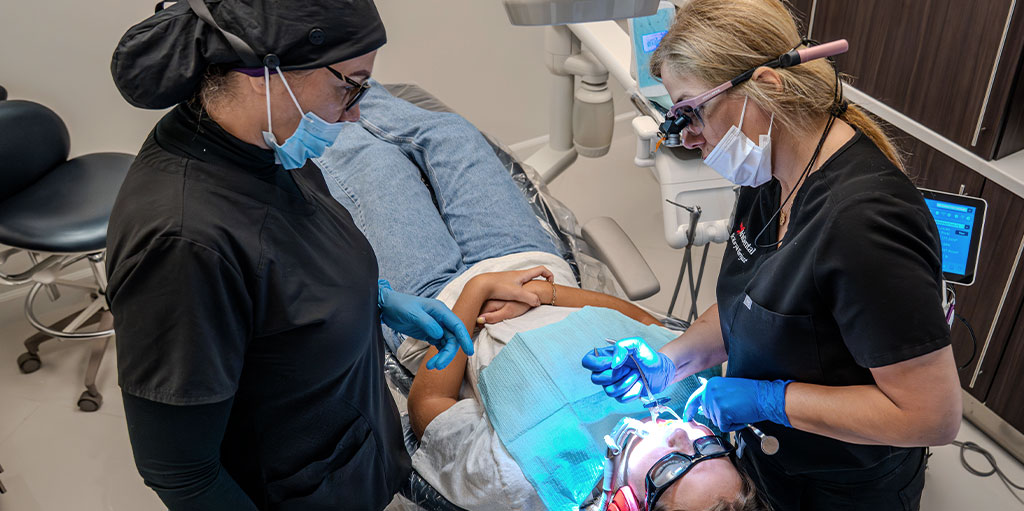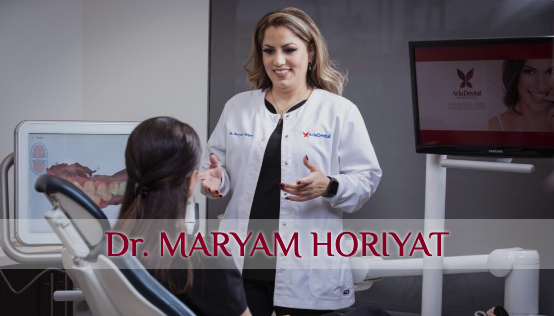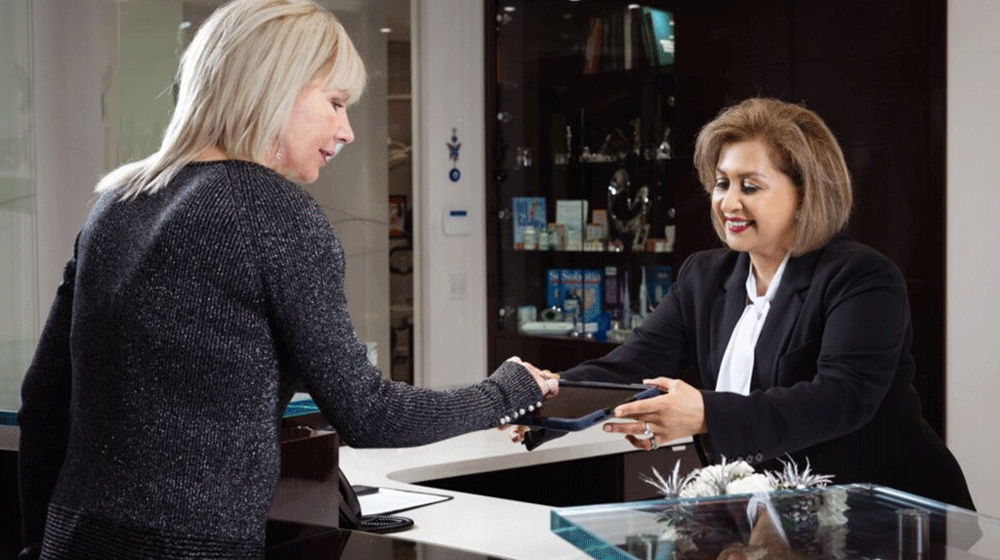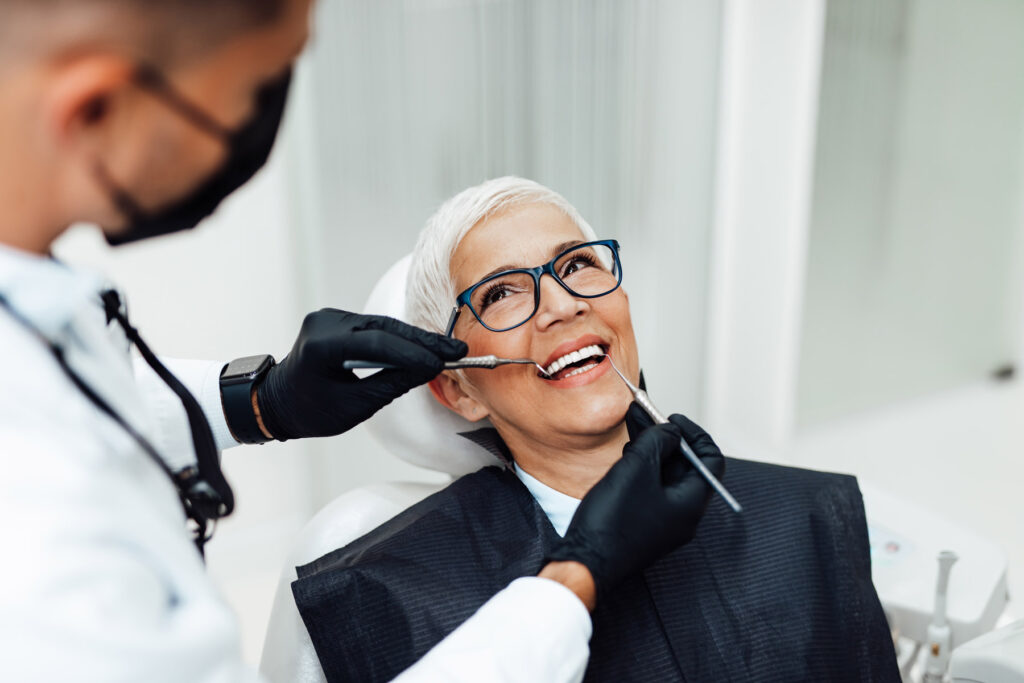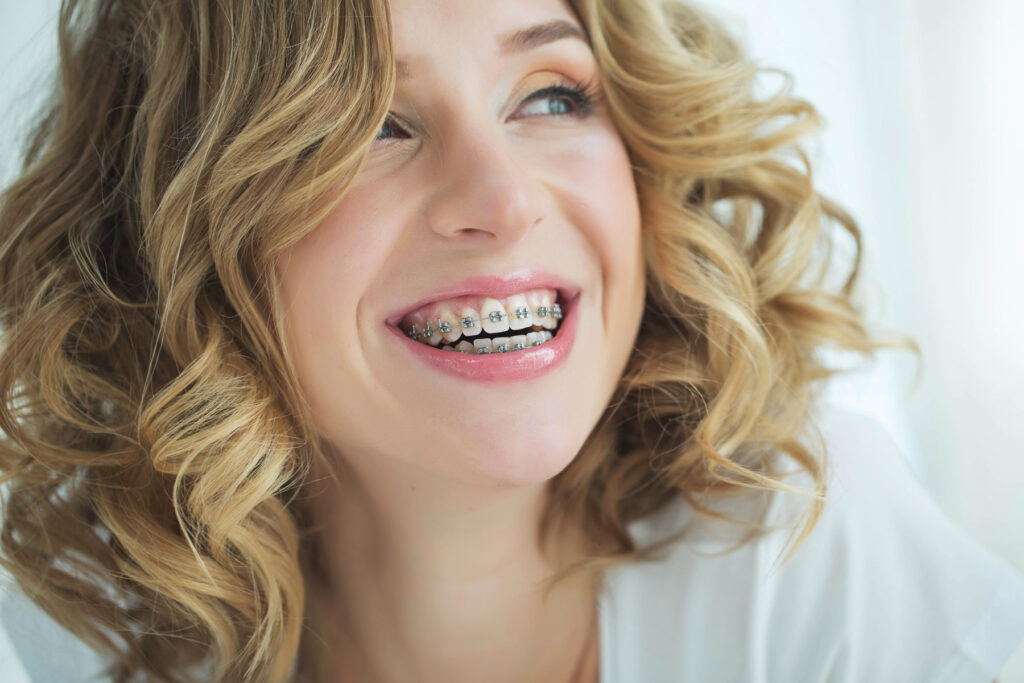What are clear braces? How do they help straighten teeth, and how are they different from metal braces? Since clear braces are less noticeable in the mouth, they are a popular option, especially for adults. In this article, we will introduce clear braces, their uses, and their types as an orthodontic procedure.
What Are Clear Braces?
Orthodontics is a common method of achieving straight and orderly teeth. Dental braces are one of the orthodontic treatments that are generally divided into two categories: fixed and removable. Clear braces, just like metal braces, are used to eliminate a wide range of orthodontic problems. The main difference between clear braces is that they are less visible and affect the appearance of the teeth less during treatment.
Different Types of Clear Braces
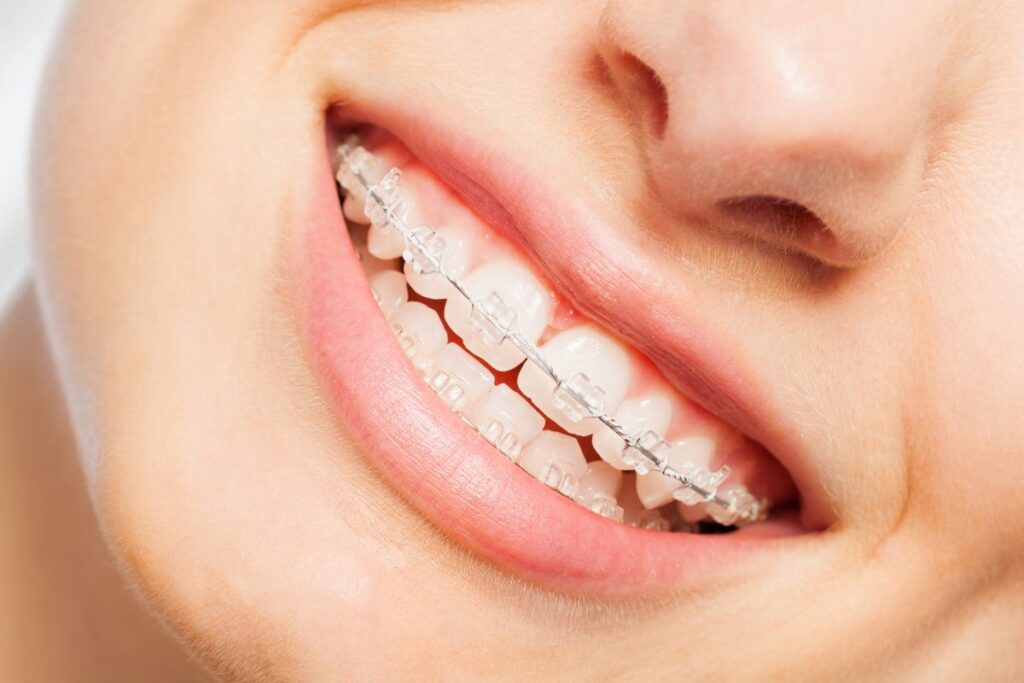
While metal braces are budget-friendly and durable, clear braces are more beautiful and yet strong enough for treatment. A variety of materials are used in the manufacture and production of clear braces. Each of these materials has its unique characteristics. The following are the most well-known types of clear braces.
1. Sapphire Brackets
These brackets are made of lab-created single-crystal sapphire (transparent and glass-like).Sapphire brackets are nearly invisible and clearer than polycrystalline ceramic. They are resistant to staining and discoloration, and have a smooth surface that reduces irritation.
2. Ceramic Brackets
Clear ceramic braces are made of ceramic (alumina) with a slightly textured, frosted appearance. They are not as invisible as sapphire, but they are more affordable and very strong. The downsides of these brackets are that they are slightly larger than metal brackets and can stain over time if exposed to coffee, tea, or smoking.
3. Self-Ligating Clear Brackets
Self-ligating brackets are made of ceramic or composite with a built-in clip (no elastic ties needed). These brackets are easier to clean, have fewer adjustments, and have shorter treatment times. But the metal clip inside may still be slightly visible.
4. Lingual Braces
Lingual braces are made of metal brackets, but are placed behind teeth, so they are hidden from view. They are completely invisible from the front, but can be difficult to clean and may initially affect speech. Lingual braces, like metal and ceramic braces, are effective for complex cases.
5. Clear Aligners (Invisalign)
Clear aligners, also known as Invisalign, are often preferred for moderate cases and are not ideal for severe misalignments. They are nearly invisible, custom-made, removable plastic trays that can be removed for eating and cleaning. Despite all the benefits, Invisalign requires discipline to wear 20-22 hours per day, which may be difficult for some people.
Uses of Clear Braces
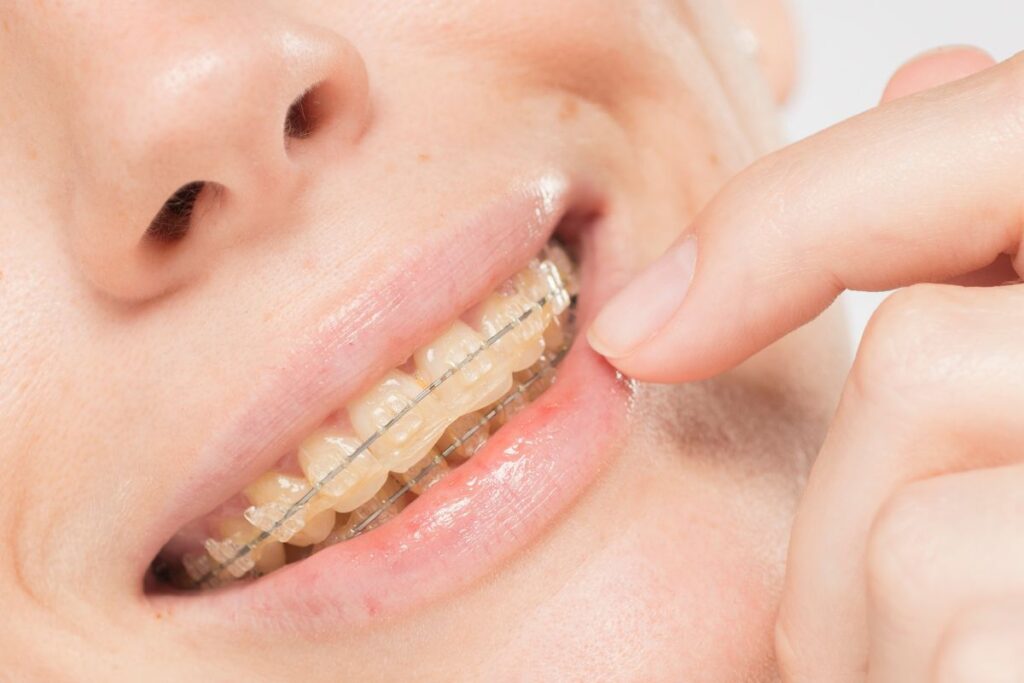
Clear braces (ceramic or sapphire) can correct the same orthodontic issues as traditional metal braces, but their use depends on case complexity and patient preferences. Here’s what they’re commonly used for:
• Crowding
• Spacing (Gaps)
• Overbite
• Underbite
• Crossbite
• Open Bite
• Misaligned Midlines
The Difference Between Clear Braces and Metal Braces
The main function of invisible braces and metal braces is the same. They are both orthodontictreatments used to straighten teeth and eliminate crowding in the mouth. But there are some differences between them that we should know.
Appearance
The first difference you’ll notice between traditional metal braces and clear braces is probably their appearance. Traditional braces use shiny silver brackets and metal archwires, and in many cases, they also feature colorful elastic bands. So, these braces are visible on the teeth.
Invisible braces, on the other hand, are tooth-colored (ceramic) or clear (sapphire). The archwiresare still metal, but some use tooth-colored or white-coated wires for camouflage. Children and some bolder individuals may prefer the look of traditional braces with colorful, cheerful elastic bands. But most adults and those looking for sophistication may prefer invisible braces.
Strength and Durability
Metal braces win in strength, durability, and efficiency. Clear braces are aesthetic but require more care to avoid breakage. Metal braces (stainless steel) are extremely strong and resistant to breakage under pressure. They can withstand heavy forces, making them ideal for complexorthodontic cases.
Ceramic braces have moderate strength and are more brittle than metal. These braces are prone to cracking if bitten into hard foods (e.g., nuts, ice). Polycrystalline ceramic is slightly stronger than sapphire but less transparent.
Duration of Treatment
Various factors, such as Case Complexity and Patient Compliance, influence the course of treatment, but bracket type also influences the treatment duration.
Metal braces are more efficient for complex cases due to lower friction and a stronger structure.There is more friction between ceramic brackets and wires. They also require gentler adjustments to prevent breakage. All of this makes treatment with clear braces a bit slower.
There are some exceptions where clear braces match metal speed. Self-ligating ceramic braces (e.g., Damon Clear) reduce friction and can match metal brace speeds. Also, for mild cases where friction has minimal impact, clear braces can function as fast as traditional ceramic braces.
Note: Both metal and clear braces have their pros and cons. Talk to a professional orthodontist to find out which option is better for you. Maryam Horiyat is a skilled and experienced doctor who can recommend the best option for orthodontics for any age.
Clear Braces limitations
The most important advantage of clear braces is their unnoticeable appearance. Clear ceramic braces have a modern look and fit in with today’s lifestyle and aesthetics. However, there are limitations to using this type of brace.
Staining & Discoloration
We can say clear braces are more prone to staining than metal braces. Ceramic braces can absorb stains from coffee, tea, red wine, smoking, vaping, curry, and ketchup. Sapphire braces are more stain-resistant, but the elastic bands (if used) will still discolor.
If you want to avoid the risk of stains on your braces, practice good oral hygiene and brush your teeth after every meal. You can use whitening toothpaste, but avoid abrasive formulas that scratch ceramic. Also, avoid smoking and highly pigmented foods and drinks as much as possible. Use a straw for beverages to minimize contact with the brackets. Visit your dentist regularly. Your dentist can remove surface stains with regular orthodontic cleanings (every 6 to 8 weeks).
Clear Braces Procedure Details
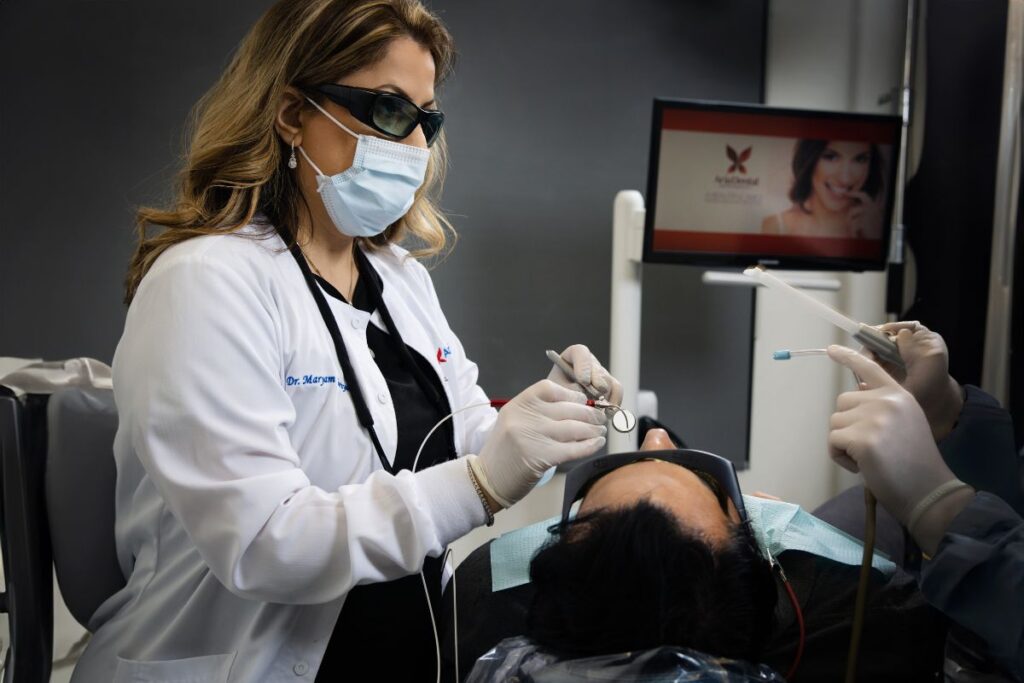
The first step is an initial consultation and treatment plan. After a thorough examination, the orthodontist will recommend clear braces (if appropriate) or alternatives (Invisalign, lingual braces). The costs will then be discussed, and the treatment process will begin.
At the start of the treatment, your teeth will be thoroughly cleaned to remove any plaque. Clear brackets will then be bonded onto the front surfaces of your teeth. The orthodontist will connect brackets to each other, and then connect them to the back molars with a wire. This process usually takes between one and two hours.
You may experience some discomfort or mild pain for a few days after your braces are applied. You can take over-the-counter painkillers like acetaminophen or ibuprofen to help relieve the pain. You will usually need to see your orthodontist every 4 to 8 weeks for a check-up and re-alignment. The entire process can take anywhere from one to three years. So you will need patience and commitment to achieve your beautiful smile.
Foods to Eat and Avoid With Clear Braces
Here is a complete list of foods to avoid, and safe alternatives, with clear braces to prevent staining, breakage, and discomfort:
Foods to avoid with clear braces:
• Hard foods like nuts (almonds, peanuts, cashews), hard candies (Jolly Ranchers, lollipops), ice cubes, popcorn kernels (unpopped pieces), whole apples or carrots (cut into small pieces instead), and crusty bread or bagels
• Sticky or chewy foods like gum (sugar-free is still risky), caramel, taffy, gummy candies, Skittles, and dried fruit
• Staining foods and drinks like coffee, black tea, red wine, colas, dark sodas, soy sauce, curry, tomato-based sauces, and berries
• Tough meats like beef jerky, and ribs (meat on the bone)
Braces-Friendly Food Alternatives
• Dairy like yogurt, pudding, and soft cheeses
• Grains like pasta, oatmeal, and pancakes
• Proteins like scrambled eggs, tofu, and shredded chicken
• Veggies like steamed broccoli and mashed potatoes
• Fruits like bananas, peeled peaches, and smoothies
• Stain-free drinks like water, milk, or almond milk, and herbal teas (avoid hibiscus or berry flavors)
If you want to take care of your clear braces in the best way, cut your food into small pieces and rinse with water after consuming staining drinks. You also need to carry a travel toothbrush for quick cleaning after meals. If a bracket pops off, don’t worry. Save it and call your orthodontist.
Cleaning Clear Braces
Cleaning teeth with braces is a little harder. You need to brush your teeth at least two or three times every day. There are special products like floss threaders and interproximal brushes that can help you clean every part of your teeth and brackets. Your orthodontist can help you know them.
Achieve Your Best Smile With Clear Braces
If your orthodontist has recommended clear braces, this is the best way to achieve a beautiful smile. Aria Dental Care is committed to solving your dental problems and providing you with appropriate treatment with the help of experienced specialists and using the most advanced methods available.




